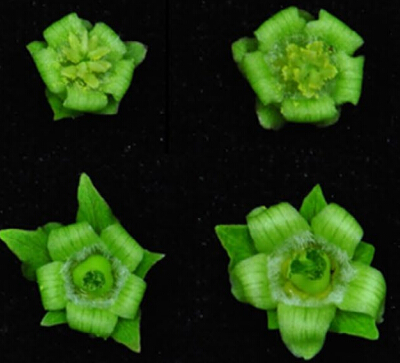Jatropha curcas is considered to be one of the greatest potential biofuel plants. However, the application of J. curcas is limited by a lack of high yielding varieties. Polyploidy breeding is an effective breeding method with a short duration and easy operation compared with traditional cross-breeding and mutation breeding, and can increase breeding germplasm resources.
Prof. XU Zengfu and his team of Xishuangbanna Tropical Botanical Garden (XTBG) obtained tetraploid and octoploid J.curcas by treating the shoot tips of seedlings with colchicine.
The polyploidy of J. curcas plants was determined by stomatal size and then fow cytometry analysis of the nuclear DNA content, and finally confrmed by counting the chromosomes of the next generation. The morpho-logical and physiological characteristics of the tetraploid and octoploid J. curcas were characterized by comparing with those of diploid plants.
Compared with diploid J. curcas plants, the sizes of stomata, leaves, male and female fowers, pollen, fruits and seeds of tetraploid plants became larger, but stomatal density, the stomatal conductance, single seed weight and oil content decreased. The octoploid plants were sterile, with no flower buds on three-year-old plants.
The study entitled “Identification and characterization of tetraploid and octoploid Jatropha curcas induced by colchicine” has been published in Caryologia. International Journal of Cytology, Cytosystematics and Cytogenetics.

Female (left panel) and male (right panel) fowers
of the tetraploid (upper panel) and diploid (lower panel)
(Image by Niu Longjian)

